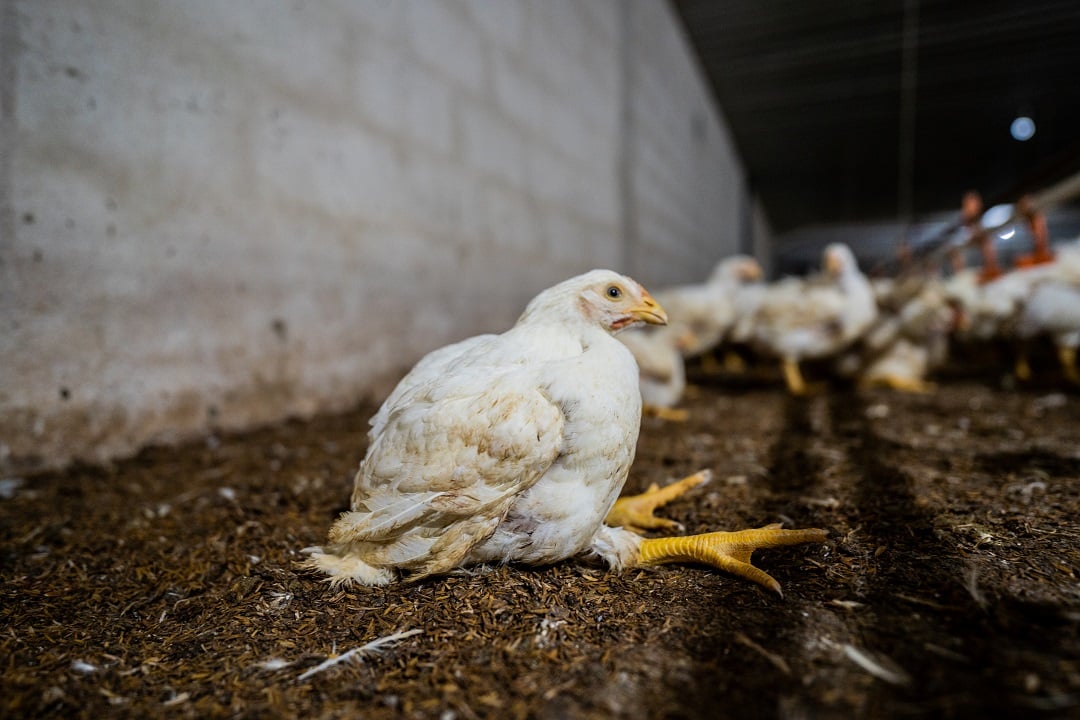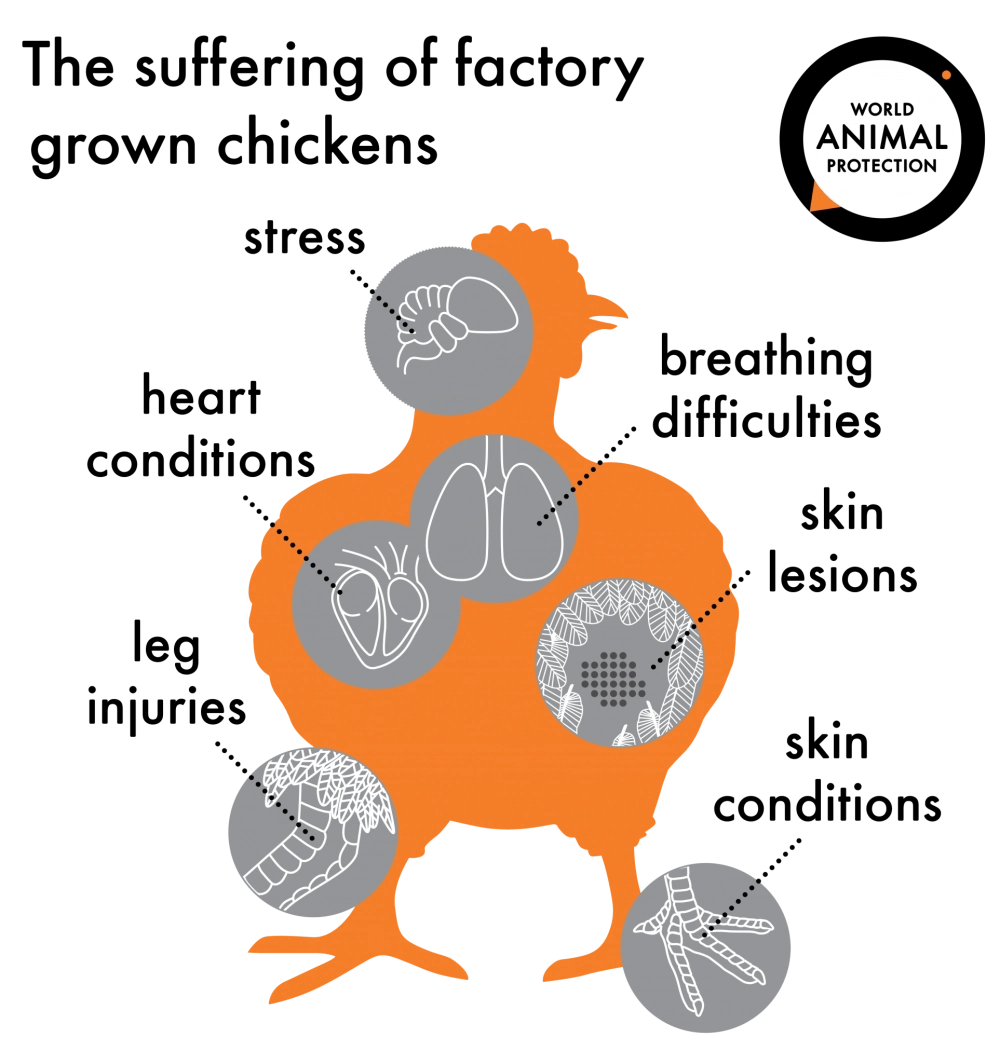
The decision of the Global Animal Partnership (G.A.P.) to require slowing-growing chicken breeds is a critical step forward for chicken welfare and a testament to the power of advocacy.
Advocates have been working tirelessly to improve the lives of broiler chickens for years. Now, a major milestone has been achieved: The Global Animal Partnership (G.A.P.) recently announced that slower-growing chicken breeds will be required under its certification standard.
What does this mean?
The G.A.P. certification now mandates the use of slower-growing chicken breeds on farms raising chickens for meat.
This change addresses a significant welfare issue in the poultry industry: fast-growing breeds are often plagued by severe health problems, including heart and skeletal issues, that cause immense suffering. Slower-growing breeds are known to experience fewer health issues, exhibit more natural behaviours and live healthier, more humane lives.
This decision aligns with the goals of the Better Chicken Commitment (BCC), a global initiative advocating for higher welfare standards in chicken production. The BCC has long pushed for changes like this, but progress has been slow, with the breed issue being one of the most challenging obstacles.
G.A.P.’s leadership in this area sets a new precedent that we hope others will follow.
Why this matters for chickens
The adoption of slower-growing breeds by G.A.P. could have a ripple effect throughout the poultry industry. While G.A.P. certification already represents a higher welfare standard, the hope is that this decision will influence other certification programs – and eventually, conventional chicken production – to adopt slower-growing breeds as their norm.
This progress is especially critical in Canada, where the Code of Practice for chickens, turkeys and breeder birds is currently under revision. This presents a unique opportunity for the industry to mandate positive changes, including phasing in slower-growing breeds alongside other welfare improvements outlined in the BCC.
 A broiler chicken in a factory farm. Photo: Haig / World Animal Protection / We Animals Media
A broiler chicken in a factory farm. Photo: Haig / World Animal Protection / We Animals Media
Why this matters for humans
The shift to slower-growing chicken breeds not only advances animal welfare but also addresses broader public health concerns. Scientific research links avian flu outbreaks to intensive poultry farming practices, where overcrowded conditions make birds more vulnerable to disease.
By adopting higher welfare standards, we can reduce the risk of future pandemics and encourage a food system that prioritizes animal well-being, public health and environmental sustainability.
How you can help
Although G.A.P.’s decision is a significant win, there’s still work to be done to ensure widespread adoption of higher welfare standards. Here’s how you can make a difference for chickens:
- Support chicken welfare initiatives: The industry listens to consumers – your voice can drive meaningful change.
- Make humane choices: When buying chicken, look for certifications like G.A.P. that prioritize animal welfare. Download our humane shopping guide to learn how to choose products that align with your values.
- Raise awareness: Share this information with friends and family to help spread the message about the importance of chicken welfare and how individual choices have the power to make change for animals.
Together, we can create a future where chickens live healthier, more humane lives.
Learn more:
The brutal life of a meat chicken
News
Conditions on most chicken farms are sparse. There is abundant food and water and long hours of artificial light to encourage eating, but usually no natural light.
Why we should eat less meat
Blog
Eating less meat is good for the planet, good for animals, and good for your health.


